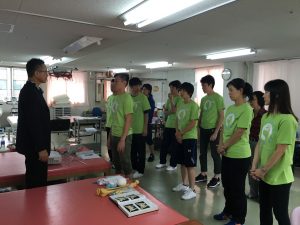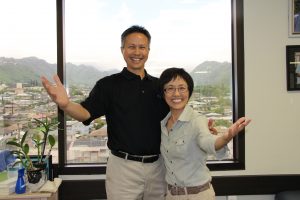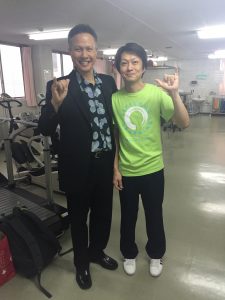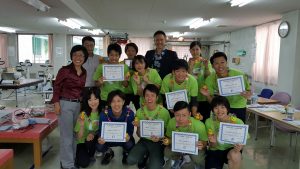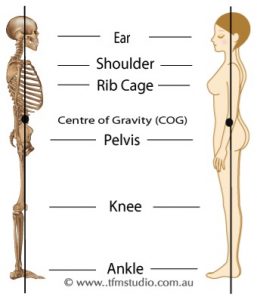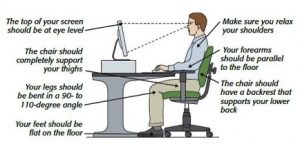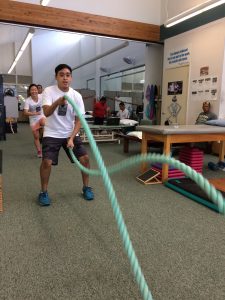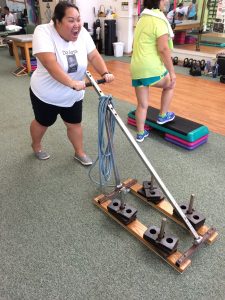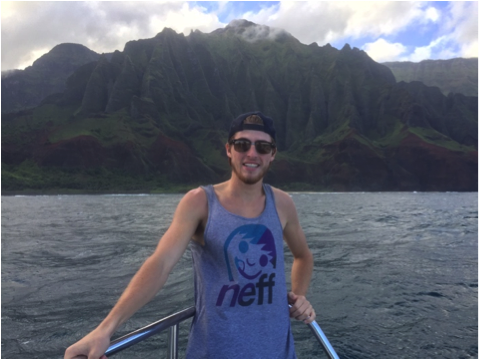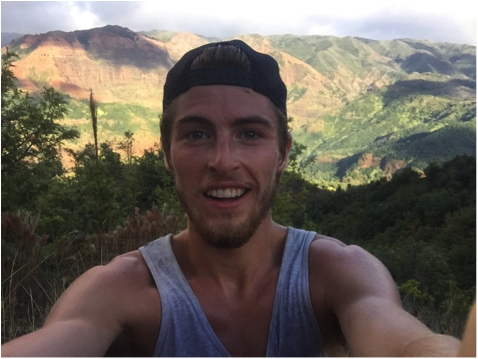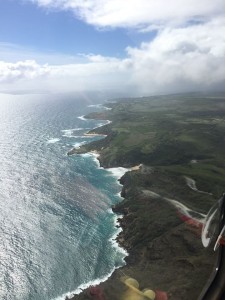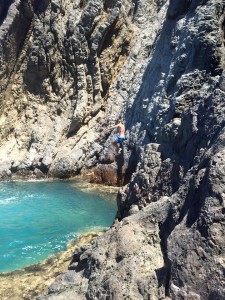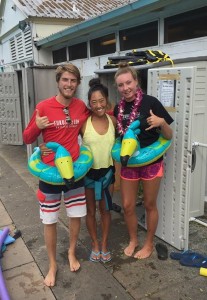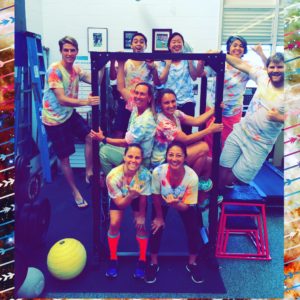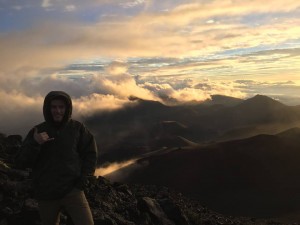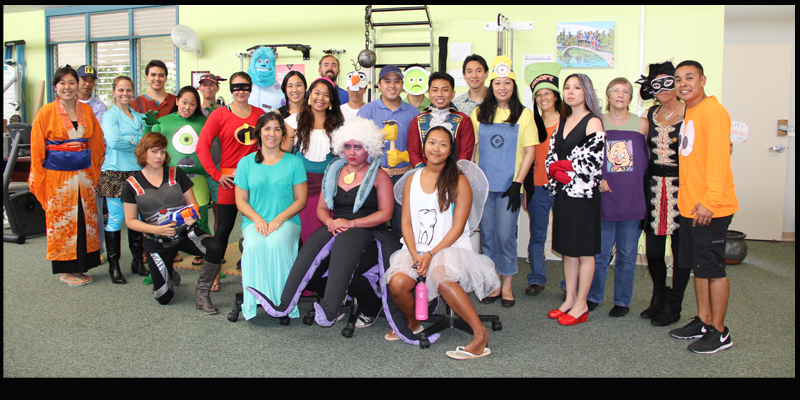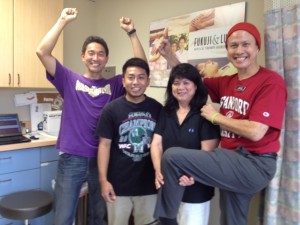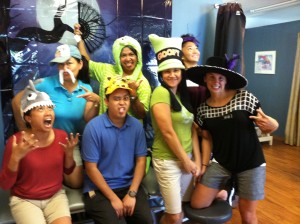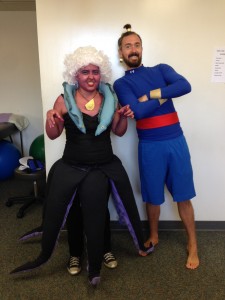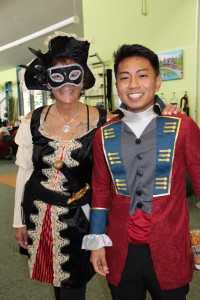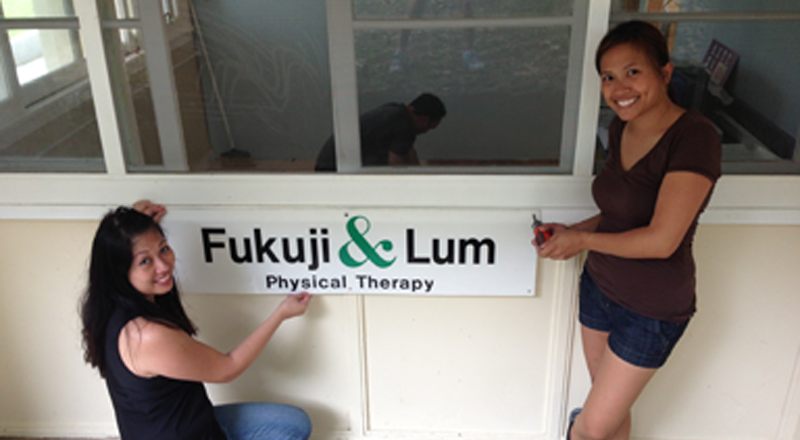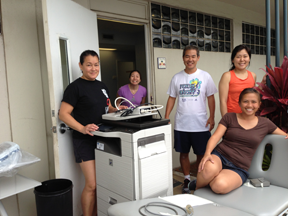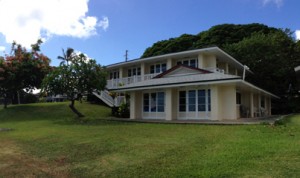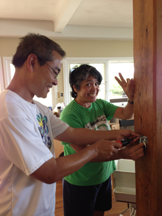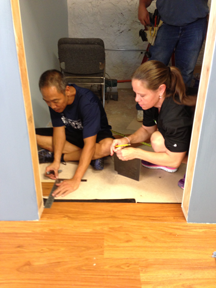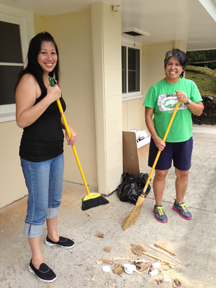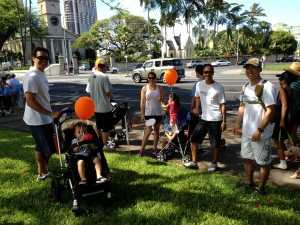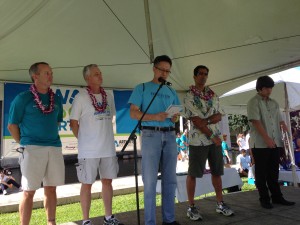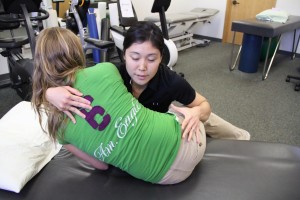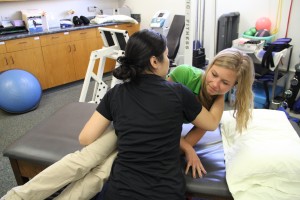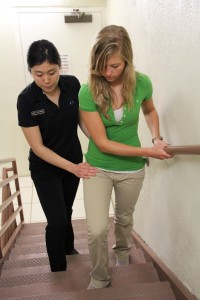To Dream the Impossible Dream: My Journey to Japan
Lifelong Learning Hawaii-Japan Oct 2016
Guest Blogger: Art Lum, P.T., co-owner of Fukuji & Lum
[one_third]

[/one_third]
[two_third_last] Lifelong Learning Hawaii-Japan logo: The symbol marking the beginning of this Hawaii-Japan relationship was the Enso – a hand drawn open circle allowing for movement and development. [/two_third_last]
The recent historic visit by Japanese Prime Minister Shinzo Abe with President Barack Obama to Pearl Harbor on December 27, 2016 brought back memories of an extraordinary work experience I had in Japan. Following three years of planning, the Fukuji & Lum team and fellow physical therapy colleagues from Japan created a series of courses titled ‘Best Physical Therapy Practice’.
The first of a four part series of courses was conducted, on October 22nd and 23rd, 2016 at Kuwana East Medical Center, Mie prefecture, Japan. The course introduced an integration of the respiratory, neurological, and musculoskeletal systems for lifelong physical therapy care.
On October 22nd, at 9 a.m., my heart beat began to rise as the first slide presented the Hawaiian flag alongside the Japan flag – the Rising Sun. Pictures of my professional membership cards, the American Physical Therapy Association (APTA) and the Hawaii Physical Therapy Association (HAPTA) were shared along with my Master of Arts degree diploma in Physical Therapy from Stanford University ’84. The journey had begun.
The objectives of the course were:
- To introduce the Annual Musculoskeletal Examination
- To teach manual assessment and treatment techniques integrating the system approach
- To teach postural and neuromuscular rehabilitation techniques
- To introduce a unique physical therapy model
- To build a relationship between physical therapists from Hawaii and Japan
[one_half] Bringing unity to this special grouping was the donning of the lime-green colored class t-shirt. The made-only-in-Hawaii sky blue colored wording and the white-brushed Enso brought smiles, enthusiasm, and cheer. We were now ready to begin our journey together, open for learning and sharing; as professionals, classmates, and friends. [/one_half]
[one_half_last]
[/one_half_last]
There were two staff therapists from the Kuwana East Medical Center who played a pivotal role in making the course a tremendous success. Rie Takakura, P.T., who works part time at the medical center and is on-call with us at Fukuji & Lum was instrumental in ‘making it happen’. She designed the manual, translating every page and served as the course assistant. Her dream of advancing physical therapy in her hometown and community in Japan had begun and was now in process.
Takashi Maruyama, P.T., Manager of the Rehabilitation Department at the Kuwana East Medical Center was a gracious host and facilitator. Takashi-san went beyond the call to create an optimal learning environment. Arranging the manpower for setup and take down and taking the leadership in accommodating the group needs and wants. He monitored the pulse of the class and acknowledged we were on the right pace. His hospitality went beyond the call in driving the F&L contingent to a nearby famous Garden saving time and ‘stress’ in confronting bus and train schedules.
The class was made up of a diverse group of professionals. Recent graduates, a professor of Biomechanics, and veteran PTs. Several had been trained in the U.S.A. and were familiar with the Paris and Sahrmann System. The majority enjoyed the ‘active’ learning atmosphere, hands-on manual therapy skill training, and patient demonstrations.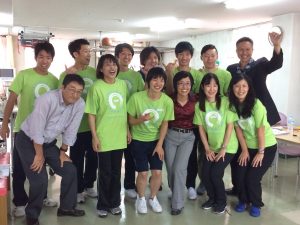
The introduction of the Annual Musculoskeletal Examination served as the blueprint, outlining strategies for clinical decision making in addressing the six major areas:
- Breathing – respiratory system.
- Posture – attaining a position that allows optimal performance, both static and dynamic. Adding efficiency, balance, and preparedness in anticipation for integrating a purposeful movement.
- Locomotion. From walking to striding.
- Reaching. The optimal use of the upper quarter, grounded and energized by the lower quarter and trunk, for daily function.
- Spine mobility. Turning on the transverse plane; head, neck, torso, pelvis, and hip for safety and energy transfer.
- Fulfillment in life. Doing things that you have always enjoyed doing (traveling, gardening, taking long walks, skiing, yoga etc.).
The unique physical therapy model (UPTM) which was also introduced to the group has evolved over my past 32 years in practice, as a clinician. I am grateful for my colleagues and indebted to my mentors. My deceased father, Chew Mung Lum, embraced his physician career of 50 years. My elder brothers, Steven Lum, MD and David Lum, Esq., and brother-in-law Robert Wo, Jr, are exemplary role models; as business owners serving their respective communities. The faculty members of the Stanford PT School, Professor David Auxter, and Erl Pettman, PT,MCSP,MCPA,FCAMT, one of four founding members of NAIOMT, most influenced my clinician hat, passion for teaching, and lifelong learning.
Referring to the historic visit; Governor David Ige writes, “Hawaii’s relationship with Japan is more than business, more than friendship. It is about family”. Words cannot describe the emotions exchanged at our first meeting on those two days in October of 2016. Rie, Takashi and I believe that we have planted the seed to growing our Hawaii-Japan relationship, building a connection that will help the world of physical therapy prosper. Together, we are committed to lifelong learning; for the goodness and well being of our patients and the lifelong care of our communities.
In awesome wonder and gratitude, I look forward to what’s ahead in 2017. Part Two: Best Physical Therapy Practice. April 15, 16. Osaka Rehabilitation University, Japan.


